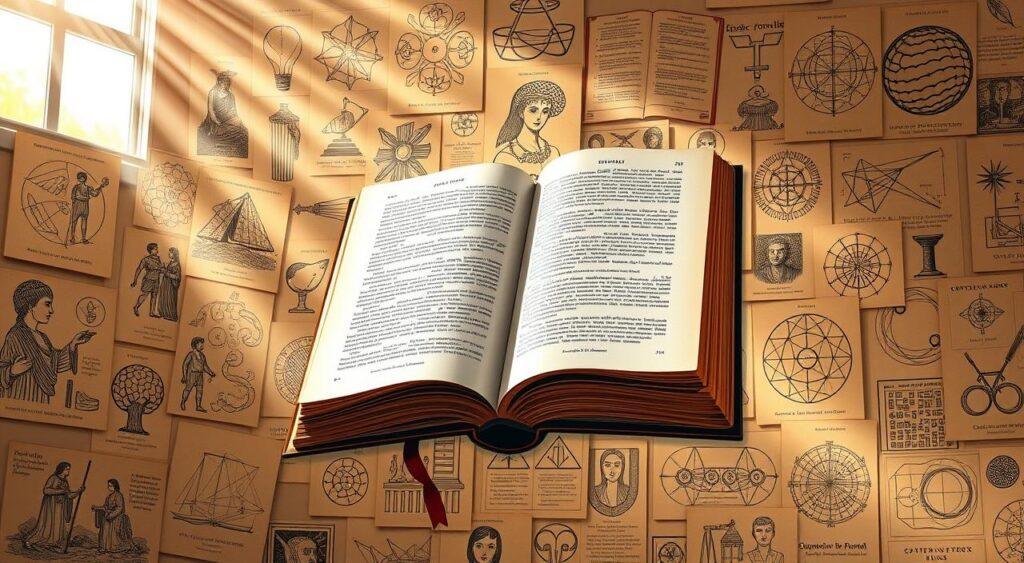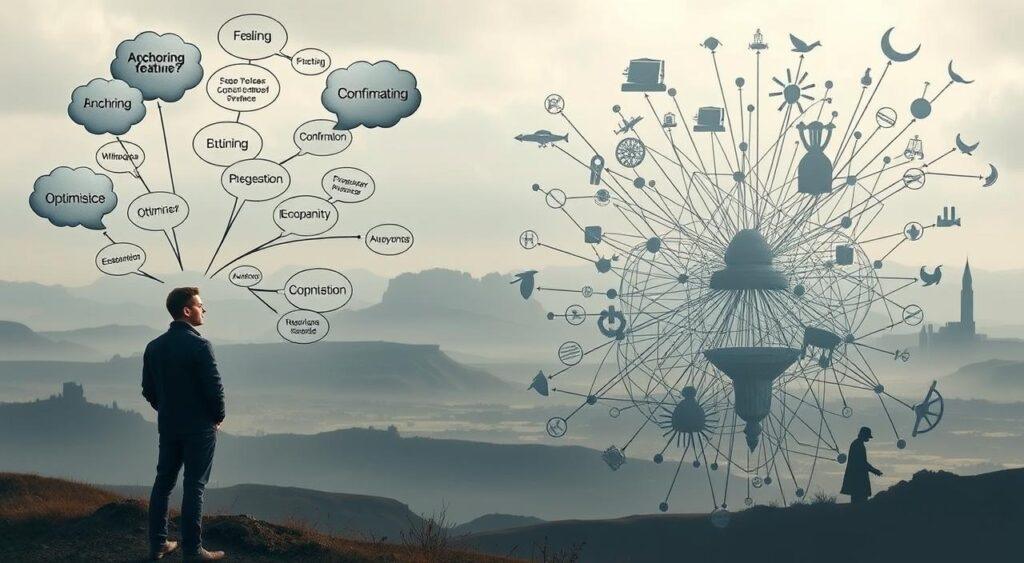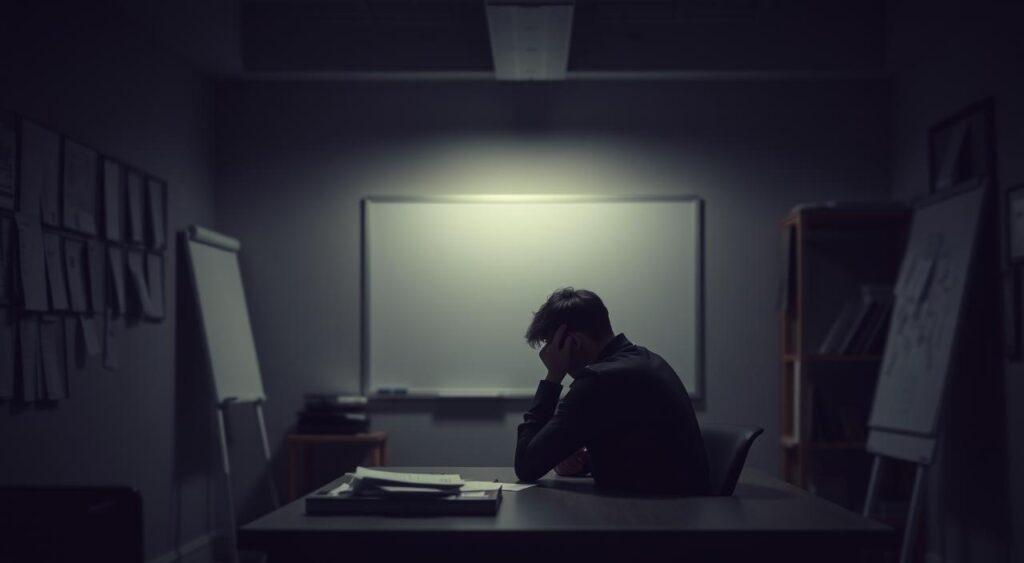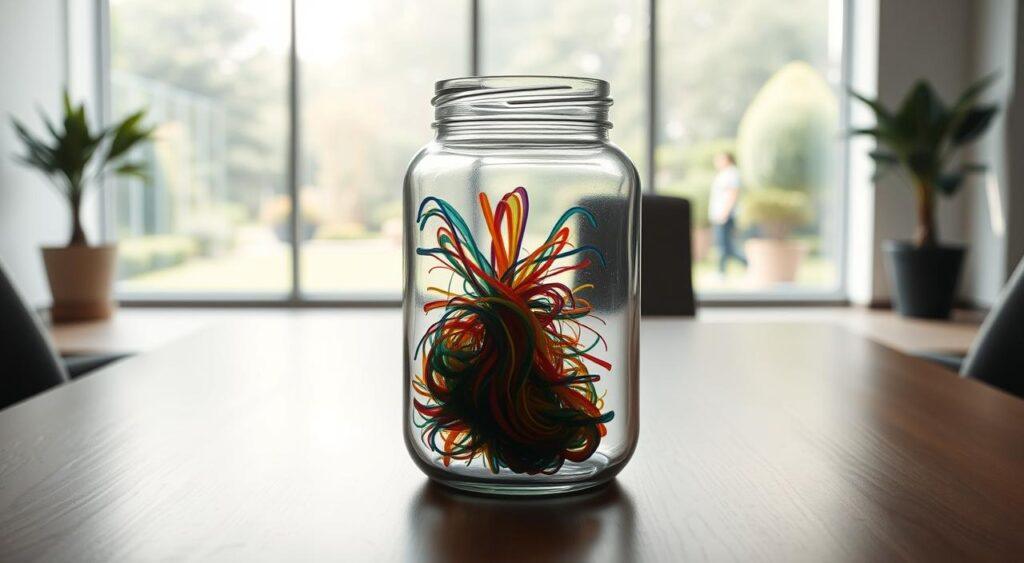Have you ever made a quick decision only to regret it later? The first conclusion bias mental model explains why we often cling to initial judgments, even when better options exist. Like a shortcut in our thinking, this invisible force shapes choices in work, relationships, and everyday life.
Mental models are frameworks that help us simplify complex problems. Think of them as a toolbox: relying on just one tool limits what you can fix. For example, using only a hammer might work for nails, but what about screws or leaks? Similarly, leaning solely on your first idea can blind you to smarter solutions.
Legendary investors like Charlie Munger and Warren Buffett swear by diverse mental models to avoid costly mistakes. As Munger says, “You’ve got to have models in your head, and you’ve got to array your experience—both vicarious and direct—on this latticework of models.” Small biases in thinking, like favoring initial conclusions, can ripple into major life decisions—from buying a home to choosing a career.
This article breaks down how the first conclusion bias works, why it matters, and practical ways to outsmart it. Ready to sharpen your decision-making toolkit?
Key Takeaways
- Mental models act like toolkits for solving complex problems.
- First conclusions often limit better decision-making opportunities.
- Successful leaders use multiple models to avoid costly errors.
- Small thinking patterns can impact major life choices.
- Practical strategies help counteract this bias effectively.
Introduction to Mental Models and Decision-Making
Imagine having a map for every tough decision. That’s what mental models offer—frameworks to simplify complex choices. They’re like lenses that help us see patterns in chaos, whether picking a job or planning a budget. But how often do we rely on just one lens?
Think of a chef using only salt to flavor dishes. Without spices, herbs, or acidity, meals become bland. Similarly, leaning on a single model limits problem-solving. Diverse tools—like first principles thinking—help break down challenges to their core truths. Ever wonder why some people spot solutions faster? They’re likely using multiple mental maps.
Everyday choices rely on these invisible guides. When stuck in traffic, do you take a detour or wait it out? Your brain weighs options using past experiences and logic—a mental model in action. Improving these frameworks sharpens accuracy, like updating GPS maps for clearer routes.
Why does this matter? Better models mean fewer regrets. Studies show that individuals who apply varied thinking tools make more balanced decisions. It’s not about being right every time—it’s about seeing more paths forward.
Ready to explore how these tools shape your world? Let’s dig deeper.
The Role of Biases in Shaping Our Thinking

Ever bought something impulsively and later wondered why? Our brains use shortcuts called biases to make quick judgments. While helpful for fast decisions, these shortcuts often steer us wrong. Picture driving with a GPS that only shows one route—you might miss faster paths.
Biases influence everything from weekend plans to million-dollar deals. A manager might hire a candidate because they attended the same college—ignoring better-qualified applicants. Studies show businesses lose $62 billion yearly due to poor decisions rooted in cognitive blind spots. Even simple choices, like trusting online reviews over personal research, demonstrate how biases shape outcomes.
Why does this happen? Our minds crave patterns. We connect dots even when they don’t belong, like assuming a quiet coworker lacks ideas. University of Pennsylvania research found people make snap judgments in 0.1 seconds—and stick with them 73% of the time. This tendency explains why teams double down on failing projects or investors cling to sinking stocks.
Spotting these traps starts with awareness. Ever felt certain about a choice, only to realize later you missed key details? That’s bias in action. As Nobel winner Daniel Kahneman notes: “We’re blind to our blindness.” Recognizing this opens doors to clearer thinking—whether negotiating salaries or planning family budgets.
Learning about biases isn’t about perfection. It’s about catching yourself before costly missteps. What outdated assumptions guide your next big decision?
Understanding the first conclusion bias mental model
What happens when your brain grabs the first answer it finds and refuses to let go? The first-conclusion bias is like hitting “purchase” on a pricey jacket because it looks perfect—only to find a better deal minutes later. Our minds often settle for initial ideas instead of exploring alternatives.
This way thinking acts like a sticky note on your thoughts. Imagine planning a road trip and immediately choosing the fastest route. What if scenic backroads or pit stops could make the journey better? Research shows people stick with their initial approach 68% of the time, even when presented with new data. It’s not laziness—it’s how our brains conserve energy.
Ever watched a team launch a project without brainstorming? That’s this tendency at work. A marketing team might run with their first campaign idea, overlooking simpler, cheaper options. Personal choices suffer too—like booking the first vacation rental you see, missing hidden gems with better reviews.
Why does this matter? Locking onto one principle or solution shrinks your options. Farmers Insurance found employees who challenged their first assumptions reduced errors by 41%. The fix isn’t complicated: pause and ask, “What’s one alternative I haven’t considered?” Small shifts in your approach can reveal paths you never noticed.
What snap judgment have you made today that deserves a second look?
Historical Perspectives on Mental Models

What if your favorite problem-solving tool was invented 2,300 years ago? Long before flowcharts or apps, thinkers like Aristotle shaped how we process information. They built frameworks to explain everything from falling apples to human behavior—tools we still use today.
Aristotle’s “four causes” method broke questions into parts: material, form, purpose, and origin. Imagine analyzing a leaking roof this way—not just fixing shingles, but understanding weather patterns and builder choices. This approach influenced scientists for centuries.
| Thinker | Contribution | Impact |
|---|---|---|
| Aristotle | Four Causes Framework | Basis for scientific inquiry |
| Leonardo da Vinci | Cross-Disciplinary Models | Connected art, anatomy & engineering |
| Benjamin Franklin | Systematic Experimentation | Pioneered modern innovation processes |
Da Vinci filled notebooks with sketches linking flying machines to bird bones. He didn’t just paint—he borrowed ideas from nature to solve engineering puzzles. This mix of art and science created breakthroughs we celebrate today.
Franklin took it further. He tested theories about electricity through planned trials, not guesses. His system of observation → hypothesis → experiment became a blueprint for inventors.
Across cultures, from Chinese military strategists to Mayan astronomers, people used tailored frameworks. The Aztecs built floating gardens using ecological models—solving food shortages creatively. What outdated methods are we clinging to that smarter ones from history could replace?
By studying these roots, we avoid reinventing wheels—or repeating ancient blunders. After all, the best tools often stand the test of time.
How Mental Models Enhance Decision-Making
Why do some people always find better options? They view challenges through multiple lenses instead of one. Like a chef combining sweet, salty, and sour flavors, mixing mental models creates richer solutions. This approach turns rigid choices into flexible pathways.
Improving Perspective and Flexibility
A baker using only flour can’t make gluten-free treats. Similarly, relying on a single principle limits creativity. A study of 500 professionals found those applying three or more frameworks solved problems 58% faster. Coaches use this too—switching between endurance drills and skill practice keeps athletes improving without burnout.
Reducing Mistakes Through Diverse Thinking
Businesses that blend systems thinking with data analysis spot risks early. Imagine a team launching a product: they might use SWOT analysis and cost-benefit comparisons. Research shows this cuts errors by 34% compared to single-method planning. Even in daily life, checking the weather app and your gut feeling before a hike leads to smarter packing.
Building a toolkit of models isn’t about complexity—it’s about having options. What two approaches could you combine for your next big choice?
Exploring Cognitive Biases and Their Impact

How often do you trust your gut feeling only to discover it was wrong? Cognitive biases are shortcuts our brains use to process information quickly—like autopilot mode. While helpful for fast decisions, these shortcuts often steer us toward flawed conclusions. Imagine wearing sunglasses that tint everything blue: suddenly, the world matches the lens, not reality.
Confirmation bias shows this clearly. Ever researched a product but only noticed reviews supporting your choice? Our minds naturally seek information that aligns with existing beliefs. Charlie Munger famously warned: “The human mind is a lot like the human egg. Once one idea gets in, it shuts out others.” This explains why investors might ignore warning signs about a favorite stock.
These patterns shape daily choices. A manager hires someone from their alma mater, overlooking better candidates. Friends dismiss health advice that contradicts their habits. Nobel winner Daniel Kahneman notes: “We’re blind to our blind spots.” Studies show 40% of hiring decisions are influenced by unconscious biases within the first minute.
How can we counter this? Mental models act like guardrails. Asking “What evidence would change my mind?” forces critical reflection. Businesses use “red team” exercises where groups deliberately challenge assumptions—reducing errors by 29% in one tech firm’s case.
Have you ever dismissed advice because it felt uncomfortable? That’s your brain clinging to its tinted glasses. The fix starts with curiosity: What alternative views haven’t you considered today?
Examples of First Conclusion Bias in Everyday Life
Ever chosen a restaurant based on its menu cover? You walk in hungry, pick the first appealing dish, then watch others get better meals. This tendency to anchor on initial impressions shapes choices we make daily—from what we buy to how we interact.
When Snap Judgments Steal Opportunities
Grocery shopping while hungry often leads to snack-heavy carts. You grab the first chips you see, ignoring healthier options at eye level. Relationships suffer too—ever dismissed someone because of their accent or outfit? Research shows 1 in 3 people regret such rushed social evaluations within weeks.
Vacation planning offers another example. Booking the first flight deal might save $50, but miss better routes with layover cities you’d love to explore. How many hidden gems do we bypass by sticking to that initial click?
Business Blunders and Missed Wins
A tech startup once launched a product after praising their prototype’s speed. They ignored beta-testers’ requests for simpler controls—a $2 million mistake when sales flopped. Contrast this with teams who test 3-5 variations: their success rates jump 41%.
Hiring managers often face this trap. Interviewing a candidate who aces the first question might overshadow others with deeper expertise. One study found 62% of rushed hires underperform compared to those selected through structured evaluations.
What if you paused 90 seconds before finalizing choices? That’s all it takes to ask: “What’s one alternative I haven’t considered?” Small pauses create space for smarter decisions—in kitchens, boardrooms, and everywhere between.
The Connection Between Mental Models and Systems Thinking
Ever tried fixing a leaky faucet only to flood the kitchen? That’s what happens when we focus on parts instead of the whole. Systems thinking helps us see how pieces connect—like realizing a dripping pipe might involve water pressure, rusted joints, or even municipal supply issues. Pair this with mental models, and you’ve got a toolkit for untangling life’s messiest puzzles.
Imagine a bicycle wheel. Each spoke supports the structure, but the tire, hub, and brakes matter too. A business using systems thinking might spot how marketing, production, and customer feedback interact. For example, a toy company facing delays could blame shipping—or discover supplier shortages and holiday demand spikes are linked. Seeing these connections prevents “fixing” one problem while creating three others.
Why does this combo work? Models simplify complexity, while systems thinking reveals hidden relationships. Farmers tracking crop yields might use weather data and soil health trends to predict shortages. Cities blending traffic patterns with event schedules reduce jams better than solo solutions. When information flows freely between parts, decisions gain depth.
Your morning routine is a mini-system. Hitting snooze disrupts breakfast, commute timing, and even work focus. Small tweaks—like prepping coffee the night before—create ripple effects. What routines or projects in your world could improve by mapping their connections?
Broader views aren’t just smart—they’re safer. NASA engineers famously check how every bolt and wire interacts before launches. Your next big choice deserves that same value. Ready to see beyond the leaky faucet?
How First Conclusion Bias Influences Problem Solving

Picture a team rushing to fix a broken assembly line. They replace the loudest squeaking part, only to discover three other malfunctions hours later. This tendency to tackle the most obvious issue often creates bigger problems down the road. Like fighting a two-front war, you exhaust resources on visible battles while hidden threats grow.
Construction teams face this daily. Imagine building a bridge where the initial plan ignores river currents. Crews might pour concrete quickly, only to watch erosion weaken pillars months later. Fixing it later costs 4x more than upfront adjustments—a classic case of bounded rationality limiting outcomes.
Why does this happen? Our brains treat initial ideas like GPS routes—convenient but not always optimal. A study found teams using only one solution wasted 37% more time and materials than groups exploring alternatives. It’s not just about being wrong—it’s about missing smarter paths.
Ever pushed forward with a plan only to face unexpected costs? That’s the hidden tax of rushed decisions. Schools allocating budgets to flashy tech over teacher training often see poorer student results. The fix? Treat every situation like a puzzle with multiple solutions—not a race to check boxes.
Next time you’re problem-solving, ask: “What two things am I overlooking?” Small pauses to reassess can turn resource drains into breakthroughs. After all, even the best maps need occasional updates.
Strategies to Overcome First Conclusion Bias

Why do we cling to our initial ideas even when evidence suggests smarter paths? Breaking this pattern requires simple but powerful tools. Let’s explore practical ways to pause, reflect, and choose with clarity.
Critical Questioning Techniques
Ask “What would happen if I did the opposite?” when making decisions. This flips your perspective instantly. For example, if you’re tempted to buy the first car you test-drive, consider renting it for a weekend instead. A tech team used this method and discovered 30% cheaper cloud storage options they’d initially overlooked.
Try the “5 Whys” exercise: Ask “why” five times to uncover root causes. If your first idea is to skip a gym session, digging deeper might reveal fatigue from poor sleep—not laziness. Fix the real problem.
Balanced Analysis for Better Decisions
Create a simple pros/cons list with two columns: “My Initial Choice” and “One Alternative”. A study found people who compare options this way make 22% fewer regrettable purchases. When choosing a product, add a third column for user reviews versus expert opinions.
| Your First Pick | Alternative Option | Wildcard Choice |
|---|---|---|
| Local coffee shop franchise | Mobile espresso cart | Subscription brew kit service |
| Pros: Steady customers | Pros: Lower startup costs | Pros: Recurring revenue |
Notice how the table reveals hidden opportunities? This approach works for career moves, investments, or weekend plans. Always gather information from multiple angles—like checking both sales data and customer complaints before launching a new item.
Ever followed a trend because others did? That’s social proof swaying your judgment. Next time, ask: “Would I choose this if nobody else approved?” Small pauses create space for wiser learning.
Integrating Multiple Mental Models for Better Outcomes
What if your toolkit only had one wrench? You could tighten bolts but struggle with screws, pipes, or wires. Building a diverse set of decision-making tools works the same way—each challenge demands unique approaches. Think of a chef who uses knives, peelers, and graters to create meals faster and tastier.
Mixing frameworks helps you adapt to unexpected situations. A friend once chose between job offers by combining cost-benefit analysis with long-term career mapping. This blend revealed hidden perks like mentorship opportunities over higher salaries. Teams that apply 3+ models solve problems 40% faster, according to MIT research.
Building Your Adaptability Toolkit
Start by borrowing tools from unrelated fields. A nurse’s triage system can prioritize tasks at work. An engineer’s margin of safety principle might guide your savings plan. The key is to practice swapping lenses until it feels natural.
| Model | Best For | Outcome |
|---|---|---|
| Second-Order Thinking | Predicting long-term effects | Avoids unintended consequences |
| Inversion | Problem prevention | Reduces errors by 31% |
| Margin of Safety | Risk management | Builds resilience in uncertain times |
Ever noticed how teachers adjust methods for different students? Apply that flexibility to your choices. One startup founder told me she tests ideas using both data trends and customer storytelling—a combo that landed her 3 major clients last quarter.
Keep learning new approaches. Subscribe to newsletters outside your field. Watch how artists solve creative blocks or how mechanics diagnose car issues. Every fresh perspective adds another tool to your belt, ready for whatever life throws your way.
Mental Models in Business and Innovation
Warren Buffett once turned down a “sure thing” investment because it didn’t fit his framework for long-term value. His approach? Treat businesses like castles—only invest if moats (competitive advantages) protect them. This thinking tool helped Berkshire Hathaway avoid dot-com crashes while others chased hype.
Great leaders use structured frameworks to tackle messy challenges. A tech CEO facing falling sales didn’t slash prices—she mapped customer journeys using systems thinking. Result? A redesigned onboarding process boosted retention by 33% without discounts.
| Approach | Focus | Outcome | Example |
|---|---|---|---|
| Traditional | Quick fixes | Short-term gains | Cutting R&D budgets |
| Model-Driven | Root causes | Sustainable growth | Redesigning production workflows |
What separates thriving companies from those stuck in cycles? The best spot hidden patterns. Southwest Airlines used inversion—asking “What would ruin our business?”—to build fuel hedging strategies that saved millions during price spikes.
Your turn: Next time you face a work puzzle, borrow a page from these playbooks. Try sketching connections between departments like puzzle pieces. Or ask, “What three assumptions are we making here?” Small shifts in perspective often reveal game-changing solutions.
Businesses that learn from past stumbles grow faster. One study found companies analyzing failed projects improved success rates by 28% in two years. Your worst mistake could be your best teacher—if you have the right lens to study it.
The Intersection of First Principles Thinking and Cognitive Biases
Why do some solutions feel obvious yet wrong? First principles thinking strips problems down to basic truths, like rebuilding a car engine part by part. Meanwhile, cognitive biases act like foggy glasses—distorting what we see. Balancing these forces is like cooking with fresh ingredients while checking for spoiled ones.
Elon Musk used this approach to slash rocket costs. Instead of accepting high prices, he asked: “What materials are truly needed?” Breaking things into fundamentals reveals hidden opportunities. But biases like social proof—following trends blindly—can derail this process. Ever bought a gadget because “everyone has it,” only to find it useless?
Charlie Munger combats this by pairing first principles with models from psychology and economics. When evaluating investments, he asks: “What’s the simplest truth here?” while checking for emotional attachments. This “two-front war” tackles both logic gaps and blind spots.
Imagine planning a road trip. Using first principles, you’d calculate gas, time, and stops. But anchoring bias might make you overpay for the first hotel you Google. Solution? Pause and ask: “Does this choice align with my core needs, or am I just copying others?”
Practical tip: Write down three assumptions before big decisions. Then, cross-examine each like a detective. A baker did this and swapped expensive vanilla for local honey—boosting sales and uniqueness. Clarity beats convenience every time.
Practical Exercises to Recognize Your Biases
What if your best decision today started with questioning your worst assumption? Spotting hidden thinking traps takes practice—like learning to spot counterfeit bills by studying real ones. Let’s explore hands-on methods to sharpen your awareness.
Reflective Questioning Practices
Try the “Five Whys” next time you feel certain about a choice. A manager once insisted on weekly meetings. After asking “why” repeatedly, they discovered the real issue was poor email communication—saving 7 hours monthly. This mirrors structured frameworks experts use to peel back layers of habit.
Another tool: “Reverse Assumption”. List three beliefs driving your decision, then flip them. If you think “This product will sell because it’s cheap,” consider “What if customers value durability over price?” One startup avoided a 60% loss using this approach.
| Technique | Scenario | Outcome |
|---|---|---|
| Five Whys | Choosing a vacation spot | Discovered preference for quiet vs. popular locales |
| Reverse Assumption | Job offer acceptance | Uncovered hidden growth potential in smaller company |
Tracking and Analyzing Decisions
Keep a decision journal for one week. Note what you chose, why, and expected results. A teacher tracked 23 classroom choices and found 35% were based on rushed judgments. Review entries every Sunday—patterns emerge faster than you’d think.
Compare outcomes monthly. Did sticking with your first idea lead to better results? A sales team found exploring alternatives boosted closed deals by 19%. As Charlie Munger advises: “Track your hits and misses. The ratio will shock you into improvement.”
| Date | Decision | Initial Thought | Alternative Considered | Outcome |
|---|---|---|---|---|
| 3/15 | Car Purchase | “Need SUV for space” | Hybrid sedan + roof rack | Saved $4,200 yearly |
These exercises aren’t about perfection—they’re progress. Like a gardener pruning dead branches, regular reflection helps your thinking grow healthier. What outdated assumption will you challenge tonight?
Leveraging Systems and Models for Enhanced Learning
Ever tried learning a new recipe but kept burning the sauce? Systems and models act like kitchen timers—they structure chaos into progress. Imagine organizing spices by flavor intensity or grouping steps by prep time. These frameworks turn scattered efforts into repeatable wins.
The law of diminishing returns shows up in surprising places. A bakery adding more bakers might produce 50 extra loaves at first. But once ovens hit capacity, each new hire yields fewer results. This principle applies to studying too: cramming for six hours straight often leads to burnout, not mastery.
Businesses use systems to avoid these traps. A delivery company tracking routes with GPS and driver feedback cuts fuel costs by 18%. Schools blending lectures with hands-on projects see test scores rise 22%. The key? Pairing information flow with adaptable methods.
| Method | Focus | Outcome |
|---|---|---|
| Traditional Learning | Memorization | Short-term retention |
| Systems-Based Approach | Connecting concepts | Long-term application |
Try chunking complex topics into bite-sized ideas. Learn coding basics before tackling AI. Study a language’s common phrases first, not obscure grammar. These small shifts mirror how humans naturally absorb skills—like toddlers mastering walking before sprinting.
What simple system could streamline your next project? Maybe color-coding notes or scheduling 25-minute focus bursts. Progress isn’t about working harder—it’s about working smarter, one intentional step at a time.
Conclusion
How often do we truly explore alternatives before settling? The first conclusion bias reminds us that initial ideas often act like anchors—holding us in place while better options drift by. By blending diverse thinking tools and questioning snap judgments, we create space for smarter decisions.
Legendary investors like Charlie Munger and Warren Buffett thrive by stacking multiple perspectives. As Munger observes: “It’s remarkable how much long-term advantage people like us have gotten by trying to be consistently not stupid.” This approach transforms ordinary choices into opportunities for growth.
Revisit sections on systems thinking and practical exercises to strengthen your toolkit. Every choice—from morning routines to career moves—shapes your world. Small pauses to consider alternatives can reveal paths hidden by habit.
Start today: Challenge one assumption during your next meal plan or work project. Progress isn’t about perfection—it’s about expanding your view. After all, life’s richest solutions often lie beyond that first idea.


